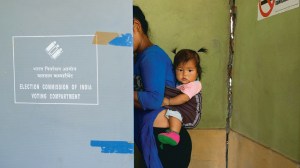- India
- International
Gaining space
Isro’s twin success with GSLV Mk-III and atmospheric re-entry are a big leap for India
India has signalled its entry into the market for launching heavy geostationary satellites with the successful take-off of its heaviest launch vehicle till date, the 630-tonne GSLV Mk-III. The experimental flight, budgeted at Rs 155 crore, also carried an unmanned crew module designed to test Isro’s capability in atmospheric re-entry. Together, the GSLV Mk-III — fitted with a passive or dummy cryogenic upper stage — and the Crew Module Atmospheric Re-entry Experiment, which successfully separated from the rocket and re-entered the Earth’s atmosphere before falling into the Bay of Bengal, redress Isro’s lack of a vehicle capable of launching communication satellites in the four-tonne class on deep space missions. They also bring India closer to a future manned space mission.
Achieving re-entry capability — without which humans cannot be sent to space — is significant, as neither Chandrayaan nor Mangalyaan has to bother with returning. India successfully launches lighter satellites for itself and others, but the GSLV had been stuck at two-three-tonne payload capacity. With the Mk-III, India would no longer be dependent on foreign space agencies to send up its heavier communication satellites, while it can put similar payloads into Earth’s orbit for others. If the Mars mission showcased Isro’s arrival in the space research and precision service markets, the GSLV Mk-III is expected to raise India’s weight further in the $300 billion global space arena.
With the government placing the space establishment centrestage in scientific research and application, India can look forward to enhanced forex earnings and technological clout. But with the Mk-III launch following on the heels of Mangalyaan’s entry into Mars’s orbit, and the fourth satellite in the Indian Regional Navigational Satellites System series that provides India with its own navigation systems scheduled for launch next March, it is also time to build a socio-academic narrative around a space programme that has successfully sent probes to Mars and the Moon on its first try. The execution of these complex technological projects should be manoeuvred to attract critical R&D projects from the West, which still elude India. A still deeper change is necessary to not only attract the young to science and engineering but also encourage them to stay there.
EXPRESS OPINION
More Explained
Apr 20: Latest News
- 01
- 02
- 03
- 04
- 05









































